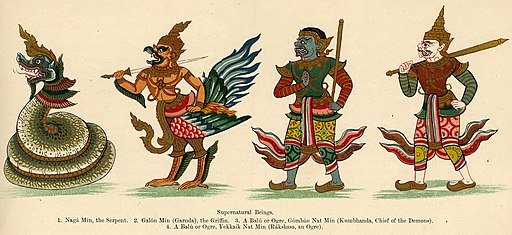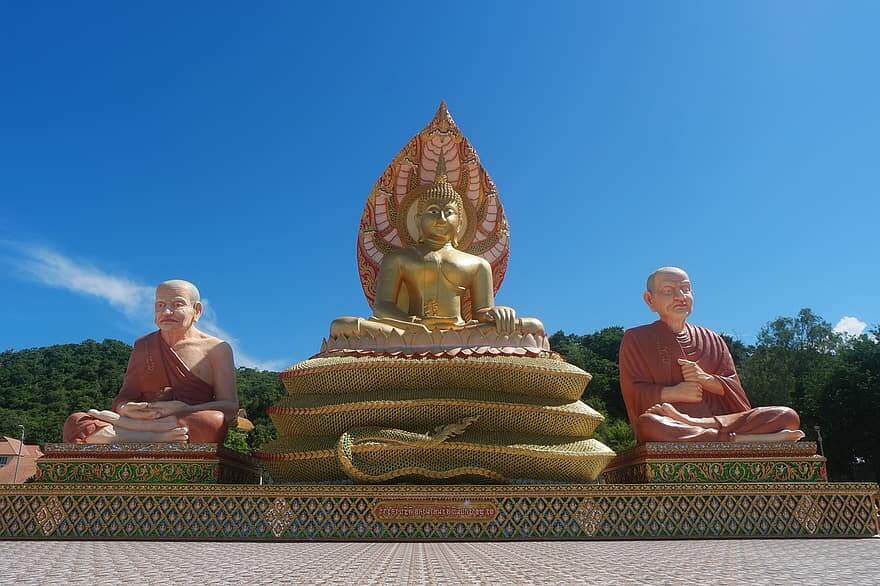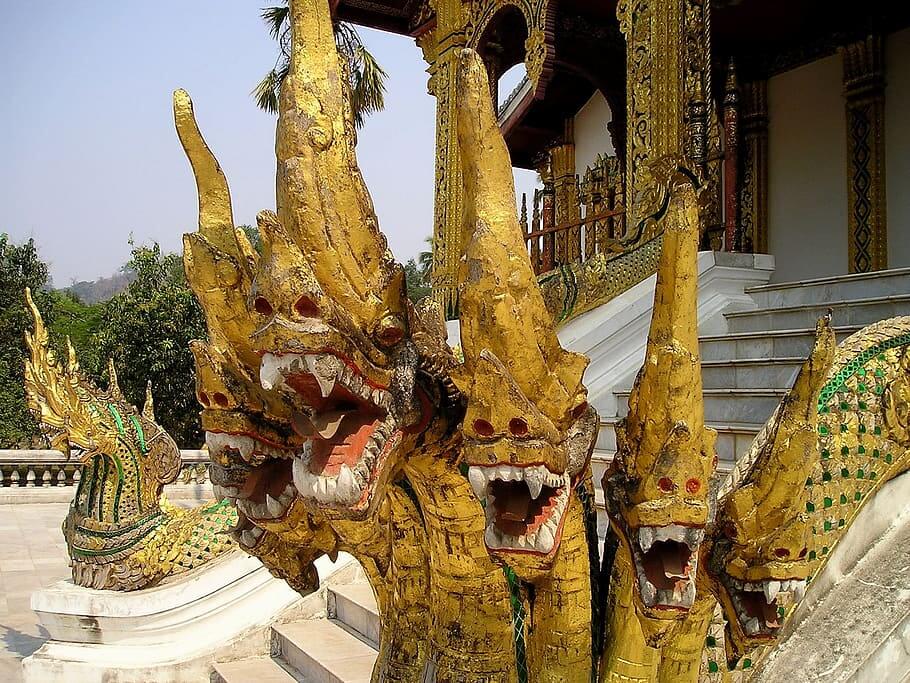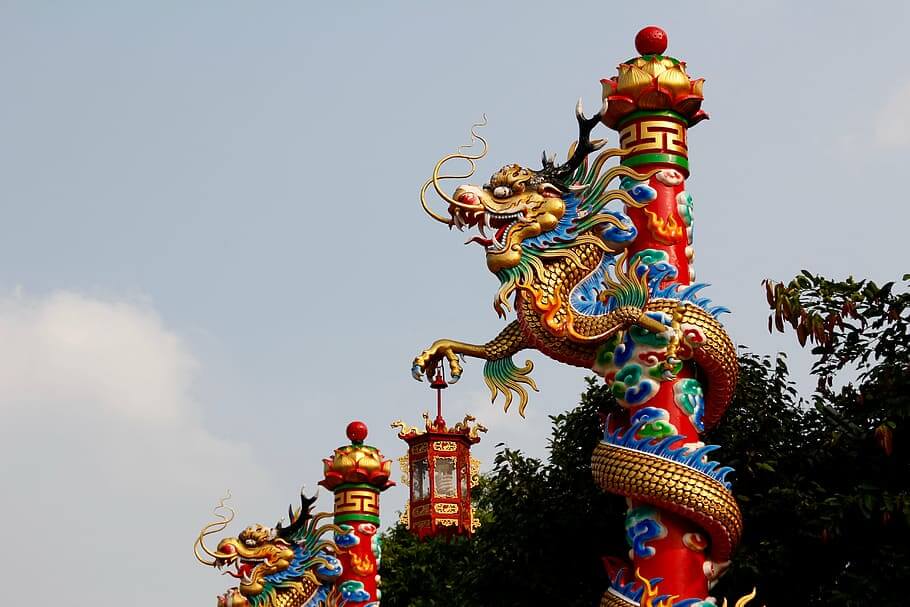Hello Mythsters. Our last flight has been a little bumpy, with Anike being sick and Koji overwhelmed with renovation work. Jaz has been holding down the fort, but we’re all ready to dive back in and take you to Southeast Asia.
Like the Pacific Islands, Southeast Asia has several different countries and many cultures within each country. Because of this, you’re in for a two-episode treat. But before we get to the dragons, I wanted to talk a little bit about the region. Like any other place, the mythology of Southeast Asia is heavily influenced by its history, and understanding the interactions between cultures can help us understand and appreciate mythology on a deeper level.
Besides the original people living in Southeast Asia, the main players in the region are India, China, and Spain.

Burmese Naga 1909 
Thai Naga 

Thailand
Indian Influence
As early as 1500 BC, sea trade routes from Southeast Asia to India, the Arabian Peninsula, and East Africa were established. Material culture, such as shipbuilding techniques, was exchanged along with spices, woods, and food. But it wasn’t until around 500 BC that Indian influence really took hold in Southeast Asia.
Hindu priests and Buddhists monks traveled with the merchants, spreading Indian culture and religion. Living separately and overall peacefully made the locals tolerate them and adopt parts of their culture into their own. It’s also worth noting that many Shudra, people from the lowest caste in the Hindu system, migrated to Southeast Asia in search of a better life, which influenced the local culture as well.
Certain aspects of Hinduism were particularly attractive to ambitious local leaders. For example, devaraja — the idea that the king is a divine leader or a living god on earth — came from the Indian concept of charavarti.
However, the Indian culture was not adopted fully. Instead, it blended with local cultures. For example, many places protected their concept of a matriarchal familial line.
It’s also worth noting that scholars debate how deeply the Indian influence penetrated local cultures. Some suggest that only the elite and ruling class adopted Hinduism or Buddhism. Also interesting is that the elite class adopted and spread Hinduism, but Buddhism was more appealing to the common man when it spread between the fifth and thirteenth century by Theravada Buddhist pilgrims wandering from Sri Lanka.
Great, so what’s all this have to do with dragons?
Well, most Southeast Asian cultures have some form of naga as their main serpent. In Thailand it’s the nak, in Cambodia it’s the neak. But whatever the name, these dragons share a lot of features with the traditional Indian naga, with little twists in the original stories to accommodate aspects of the local culture.
One thing I find absolutely intriguing is that the creation myths for several Southeast Asian cultures involve the local people descending from naga, mixing with humans only when the Indian merchants arrive.
Chinese Influence
China had more of an economic influence in Southeast Asia as opposed to the cultural influence from India. Traders, merchants, Buddhist monks and Imperial representatives arrived in the thirteenth century. Chinese immigrants who arrived before the nineteenth century tended to assimilate into the local culture. Those who came after remained separate, neither sharing their Chinese culture nor adopting the local culture.
Often, naga in Southeast Asia take on the physical features of Chinese long, with similar horns, mouths, and serpentine figures. However, for the most part the actions of these naga remain closer to Indian cultural beliefs.
European Influence
And then Europe gets involved.
The first Europeans went to Southeast Asia in the early fifteenth century. However, it wasn’t until Spain and the Netherlands took power in the late sixteenth century that European culture began to heavily influence Southeast Asia.
European countries spread Christianity. Particularly important to us is the Spanish spread of Catholicism in the Philippines. The main serpent from the Philippines, Bakunawa, existed before Spanish influence. But the tales have adapted to include Catholic values, making the serpent a clearly evil creature.
I hope this brief introduction gives you a little understanding of the various historical influences in Southeast Asia. Next week, we’ll have the first of two podcasts for the region, as well as a couple of cultural deep dives on the blog.
Be sure to come back and check out the fascinating mythology of this region.
Sources
- History of Southeast Asia
- Devaraja
- Chinese in Southeast Asia
- India’s Cultural and Civilisational Influence on Southeast Asia
- Southeast Asia: Religions
- The Spread of Hinduism in Southeast Asia and the Pacific

Koji A. Dae
Koji is a dreamer, a mother, and a writer in that order. The first short story she clearly remembers writing involved fairies losing their wings, and ever since then mythology has found different ways to creep into her storytelling.

Be First to Comment